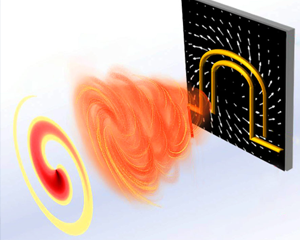Stoney's British Pub
3007 Concord Pike
Wilmington, DE
7:30pm
 Ritesh Agarwal
Ritesh AgarwalUniversity of Pennsylvania
“How Can Ideas from Tornadoes & Whirlpools Improve Our Internet?”
Our insatiable appetite for receiving, sending, and processing data has led to an explosion in the data handling capacity of our information technology (IT) infrastructure. However, with currently close to 20 billion connected devices, which will only increase as we go forward, along with increasingly large amounts of data that are processed, puts severe limitations on our IT networks. If these networks cannot handle the exponential increase in data packets that are moved at any instant, a severe information crisis will occur. IT networks use light to encode, transmit and receive information and utilize many devices such as lasers, modulators, fiber optical cables and photodetectors. Currently, these systems are mostly based on the wavelength division multiplexing concept but there is a limitation on the spectrum available for information channels. Therefore, IT systems are facing difficulties to scale up their capabilities with the growing requirements hence requiring revolutionary breakthroughs in technology. The light beams that are used for carrying data have many more capabilities than those that have been exploited. One such degree of freedom is what are called the vortex modes of light akin to what we observe in tornadoes and whirlpools. These vortex modes of light can be trained to encode, transmit and process information in addition to wavelength division multiplexing to significantly boost the information carrying capacity of networks. However, this is not an easy task and requires many breakthroughs in science and technology of optical materials and devices. In this talk, I will discuss some of the recent progress and challenges in creating and studying materials and devices that can produce, transmit and detect the different vortex modes of light that are promising for developing the next generation of IT infrastructure.
